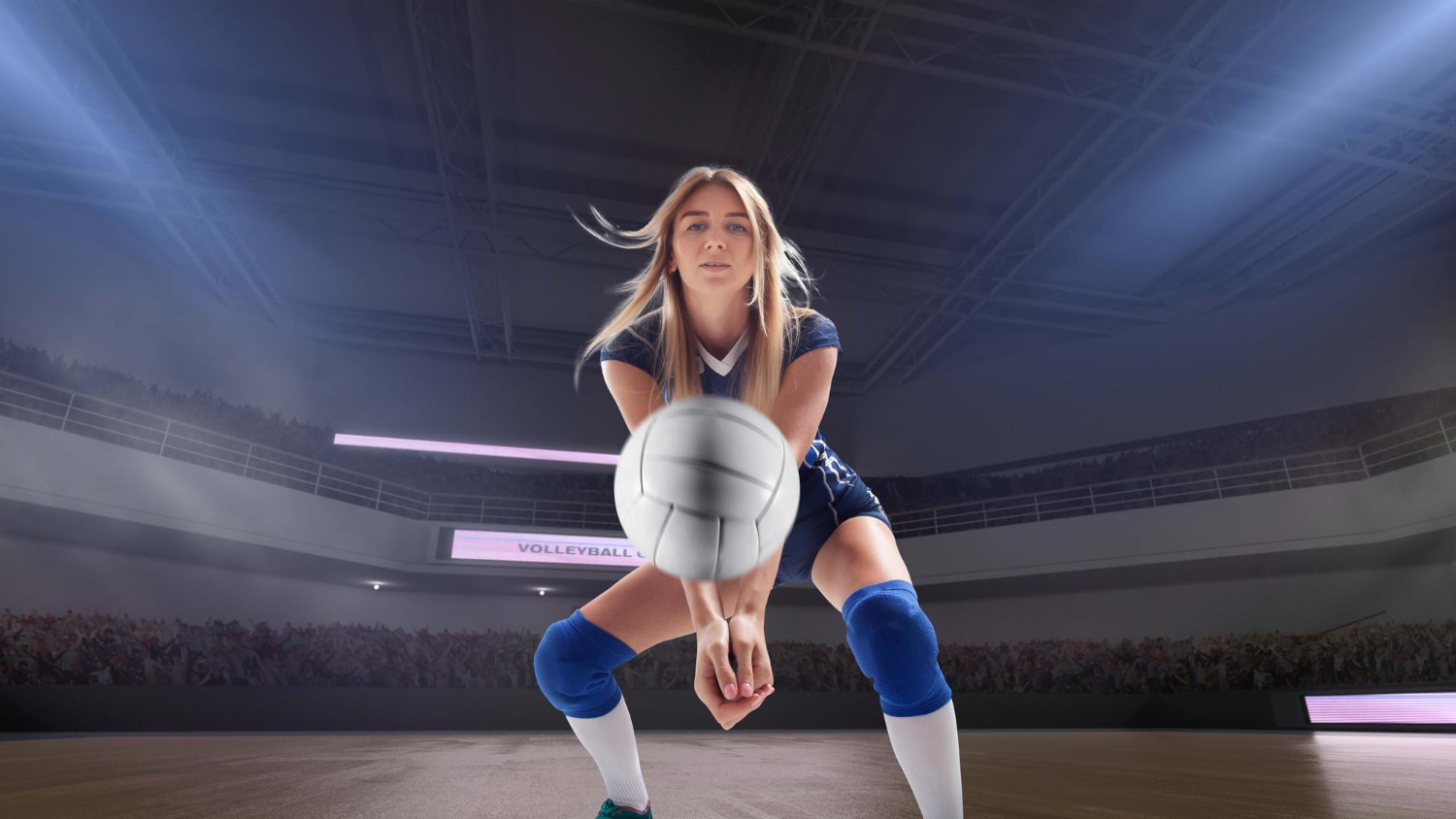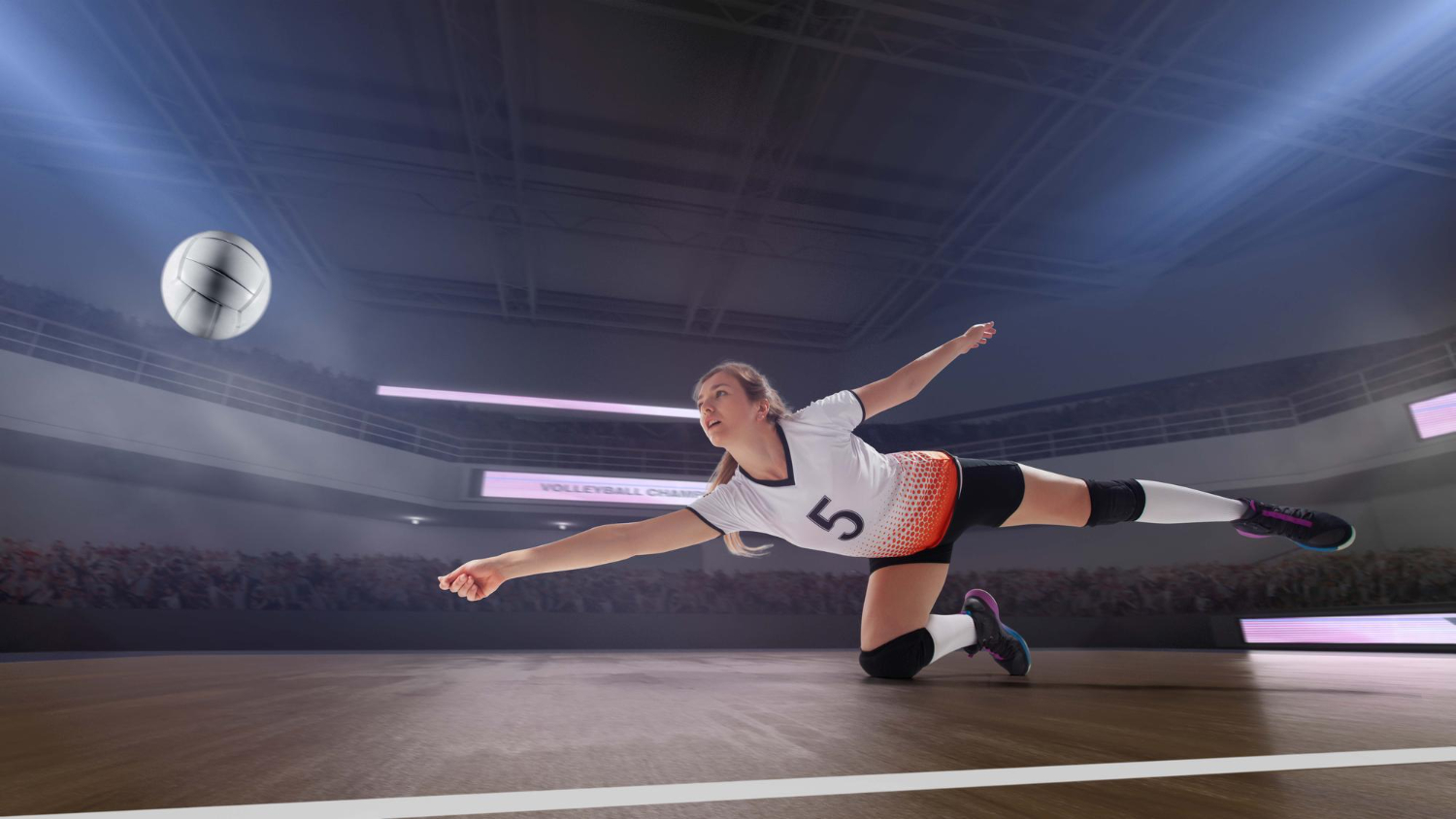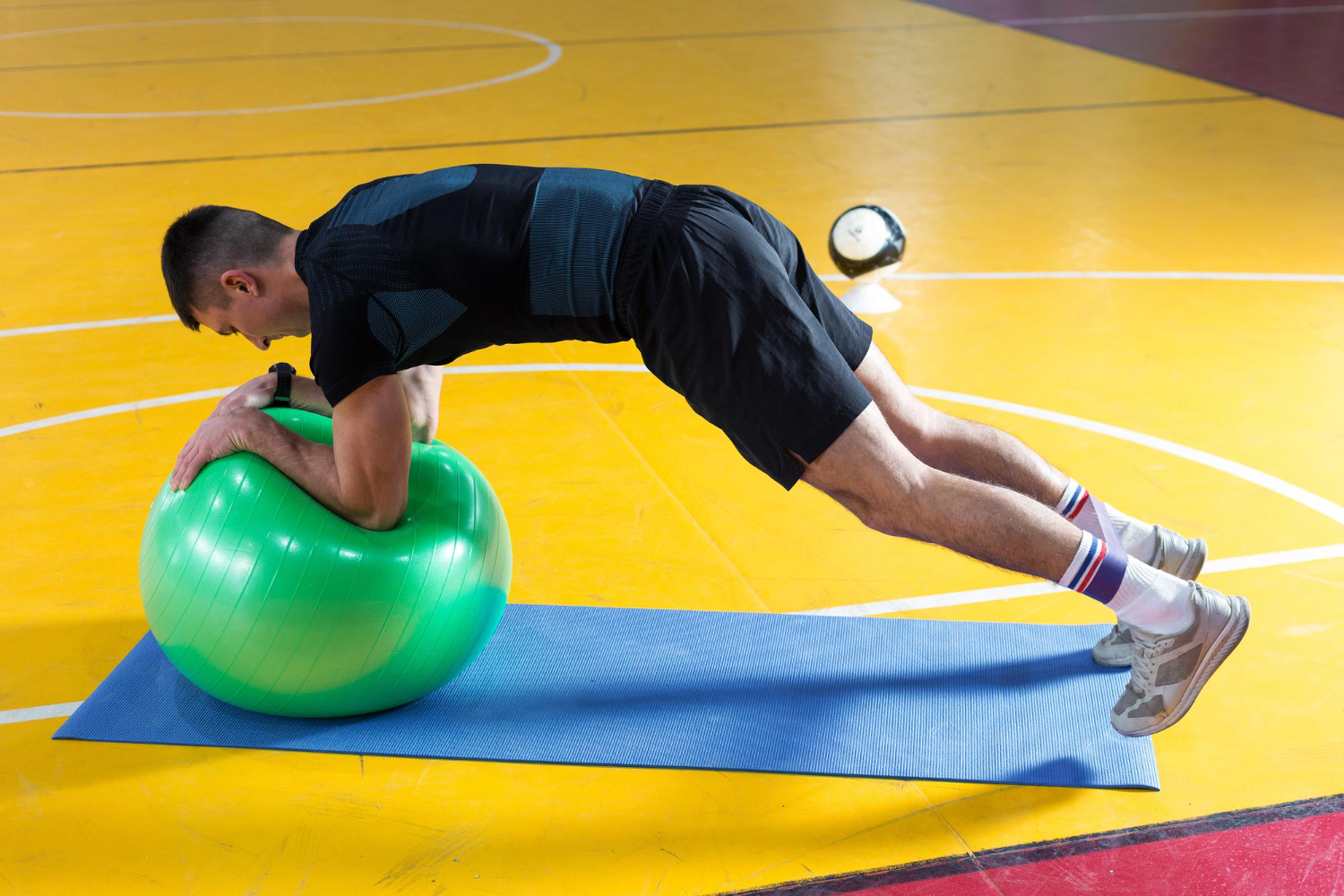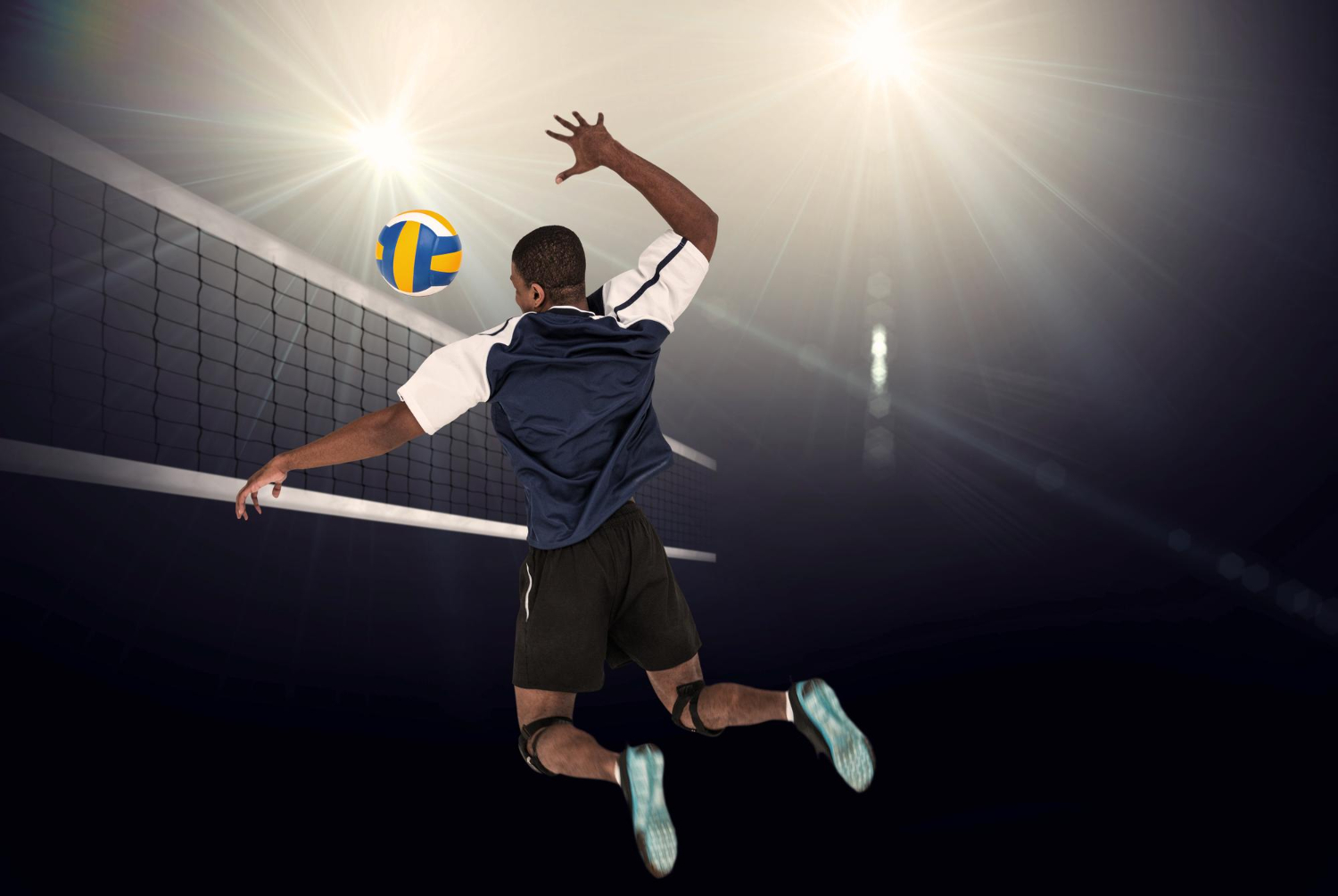Table of Contents
TogglePassing is the backbone of every successful volleyball play. Whether you’re a beginner or a seasoned athlete, strong passing skills ensure better ball control, accurate sets, and more scoring opportunities. This blog covers essential volleyball passing drills that improve technique, build consistency, and boost overall court performance for both indoor and beach players. Let’s get into the drills that make great passes second nature.
What is Passing in Volleyball?
Passing in volleyball is the first touch after a serve or attack, used to control the ball and direct it to the setter. It’s a fundamental skill that sets the tone for the entire play. A good pass allows your team to stay in system, giving the setter more options and the hitters a better chance to score. Most passes are made using a forearm platform, also called a bump, requiring proper body posture, angle control, and quick footwork. In both indoor and beach volleyball, consistent and accurate passing is essential for team success.
Why is Passing Important in Volleyball?
Passing is the foundation of every successful volleyball play. Whether you’re defending a serve or transitioning into offense, a strong pass sets everything in motion. Without accurate passing, even the best hitters and setters can’t execute plays effectively. Here’s how passing influences the game:
- Enables Attacks: Passing is the first step in the pass-set-hit rhythm. A clean, accurate pass gives the setter time and options, making it easier to run a coordinated offense and initiate a powerful attack.
- Maintains Ball Control: Good passing helps keep the ball in your team’s hands, especially during serve receive. When players control the first touch, it reduces errors and helps stabilize the play.
- Impacts Offensive Strategy: Accurate passing opens up a wider playbook for the setter. It allows the offense to become more unpredictable, forcing the defense to guess, and often guess wrong.
- Builds Teamwork: Passing requires communication, positioning, and timing. It encourages players to work together, trust each other’s movements, and anticipate the flow of play.
- Creates Opportunities: A well-executed pass can create scoring chances by putting hitters in perfect positions to attack. The better the pass, the better the chance of outsmarting the defense.
- Defense Foundation: Passing is not just for offense; it’s key to strong defense too. It allows defenders to transition quickly from digging a ball to launching a counterattack.
Looking to improve every area of your game? Don’t miss our full guide on Volleyball Drills!
Core Principles of Effective Passing in Volleyball
Great passing isn’t just about making contact with the ball, it’s about technique, timing, and decision-making. These core principles help players develop consistency and control in every phase of the game:
- Platform Creation: Build a strong, flat platform with your forearms by locking your elbows and keeping your wrists together. This stable surface directs the ball cleanly toward the target.
- Footwork: Quick and balanced footwork positions your body correctly before the pass. Stay light on your feet and be ready to shuffle or adjust in any direction.
- Eye Contact: Track the ball from the moment it leaves the server’s hand to the point of contact. Good eye contact ensures better timing and precision.
- Anticipation: Read the server’s body language and the ball’s trajectory early. Anticipating the ball’s path gives you a head start in setting up a quality pass.
- Communication: Call out who will take the ball, especially in serve receive or broken plays. Clear communication prevents confusion and helps organize the defense.
- Consistency: Use drills that reinforce proper mechanics and muscle memory. Repeating accurate passes under various conditions improves reliability.
- Adaptability: Every serve is different. Adjust your passing angle, body positioning, and footwork based on speed, spin, or placement of the incoming ball.
- Sweet Spot: Aim to contact the ball on the meaty part of your forearms. This area absorbs the ball best and allows for accurate redirection without unnecessary movement.
- Passing Angles: Learn how to control the direction of your passes using your platform angle. Practicing from different court positions sharpens this skill.
- Focus on the Setter: Deliver passes that are high and controlled, giving your setter time to make strategic decisions and run the offense effectively.
Volleyball Passing Drills to Elevate Your Game
Whether you’re playing on the beach or indoors, solid passing is the foundation of every great volleyball play. Effective passing volleyball drills help sharpen your control, footwork, and reaction time, all critical for clean first touches and setting up powerful attacks. Below are some essential passing drills designed for both beginners and intermediate players to boost consistency and confidence on the court.
Volleyball Passing Drills for Beginners
Starting out in volleyball? These beginner-friendly passing drills in volleyball are perfect for building consistency, improving technique, and developing the court awareness needed to grow into a reliable passer. Each drill below is simple, effective, and designed to reinforce the fundamentals of passing.
-
Four-Set Drill
- Purpose: Improves passing accuracy and consistency to a setter.
- How it works: Players pass the ball to a setter from four different positions around the court in sequence. Repetition helps solidify body positioning and control, ensuring a reliable delivery each time.
-
Passing Out of the Net
- Purpose: Builds quick reactions and control in tight spaces.
- How it works: Practice retrieving balls passed too close to or into the net. Focus on getting under the ball and passing cleanly out to a target. Great for defensive recovery training.
-
Triangle Drill
- Purpose: Enhances movement, timing, and team coordination.
- How it works: Three players form a triangle and pass the ball around in a rotating sequence. Can be done with one ball (for technique) or multiple balls (for speed and pressure).
-
Contact Drill
- Purpose: Refines technique for clean, consistent ball contact.
- How it works: Toss balls directly to players who focus solely on using the correct platform and contacting the ball on the “sweet spot” of their forearms. Emphasizes form over movement.
-
Cross Court Pepper
- Purpose: Develops all-around control and awareness.
- How it works: A variation of the standard pepper drill, players pass and hit diagonally across the court to mimic in-game cross-court plays. Builds rhythm, reflexes, and teamwork.
-
Hitting Drill: Turn-Go-Hit
- Purpose: Integrates passing with attack prep.
- How it works: Players start with their backs to the net, turn on cue, pass or receive a pass, then immediately transition into an attack. Encourages quick transitions and offensive readiness.
-
Lateral Passing: 3 Touch
- Purpose: Improves footwork and side-to-side control.
- How it works: Players receive and pass three consecutive balls while moving laterally. Focus is on maintaining balance, form, and quality passes while in motion.
-
Pass and Set Drill
- Purpose: Strengthens the connection between passers and setters.
- How it works: One player passes to a designated setter, who then sets the ball to an imaginary or real hitter. Encourages consistency and communication in game-like sequences.
-
Passing Technique Warm-Up
- Purpose: Prepares the body and mind for passing drills.
- How it works: Includes light toss-and-pass reps, self-passing, and platform drills to reinforce basic mechanics before jumping into more intense drills.
-
Perfect Passes
- Purpose: Builds high passing standards.
- How it works: Players work to achieve a set number of accurate, perfectly placed passes. Often done under time or rep constraints for added pressure.
-
Target Serving Drill
- Purpose: Enhances serve receive under pressure.
- How it works: Players practice receiving serves aimed at specific court zones, then pass accurately to a setter or target. Teaches control against various serve types.
-
To Kill Ball Control Drill
- Purpose: Sharpens recovery and advanced control skills.
- How it works: Players are fed challenging balls off-target, fast, or spinning, and must maintain control and continue the rally. Great for building calm under chaos.
-
Toss Catch Drill
- Purpose: Introduces beginners to platform mechanics.
- How it works: Players toss the ball to themselves or a partner and catch it using proper passing form. Focuses on feel, position, and readiness without the pressure of live play.
Advanced Volleyball Passing Drills
Once you’ve mastered the basics, it’s time to level up. These advanced passing drills in volleyball are designed to build consistency under pressure, improve your ability to handle aggressive serves, and elevate your overall court awareness. Perfect for competitive teams and experienced players, these drills simulate real-game intensity and demand precision.
-
5-3-5-3-5 Passing Drill
- Purpose: Builds consistency, mental focus, and endurance during serve receive.
- How it works: Three passers and one target (usually a setter or coach) work together to complete a sequence of perfect passes. The goal is to achieve five perfect passes, then three in a row, followed by another five perfect passes, three in a row again, and finally five more perfect passes—all within a set number of serves. This structure forces players to maintain focus throughout the drill. Variations can include limiting time or increasing the number of required perfect passes to raise intensity.
-
21 Down Serve Receive Drill
- Purpose: Simulates serve receive pressure in a competitive, game-like environment.
- How it works: Two teams serve alternately to each other’s passers. Each good pass subtracts from a starting score of 21, while each bad pass adds to it. The objective is to reach zero by completing perfect passes faster than accumulating bad ones. This drill emphasizes precision, mental toughness, and smooth transitions between passing and serving roles.
-
Pass High on the Left and Right Side
- Purpose: Trains players to adjust quickly to off-target passes and control ball height.
- How it works: Players receive balls on the left and right sides of the court and must deliver high, arcing passes to simulate out-of-system or slow-transition plays. The drill focuses on platform angles, footwork, and balanced body positioning, helping players remain steady and accurate in challenging situations.
-
X Passing Drill
- Purpose: Enhances movement, communication, and directional passing accuracy.
- How it works: Players form an X pattern on the court and pass diagonally across—for example, from front right to back left. After passing, each player rotates to a new spot in the pattern. This drill improves coordination and communication. To increase difficulty, coaches can incorporate live serves, free balls, or down balls into the drill.
-
Butterfly Passing Drill in Volleyball
- Purpose: Builds rhythm, endurance, and consistency in passing under movement.
- How it works: Two lines of players face each other across the court. Players pass the ball and then immediately run to join the opposite line, continuing the cycle without stopping. The drill can be adapted to include setting or spiking, but the primary focus is on footwork, control, and maintaining a steady tempo during transitions.
-
Pass and Toe Touch Drill
- Purpose: Improves agility, balance, and quick recovery after passing.
- How it works: After making a pass, the player immediately touches a cone or line with their toe before resetting for the next ball. This simple addition reinforces fast recovery and movement readiness post-pass, training athletes to stay engaged and agile between touches.
-
Wall Passing Drill
- Purpose: Sharpens passing technique and muscle memory through high reps.
- How it works: A player passes the ball repeatedly against a wall from a set distance, focusing on consistency and control. The drill can be made more challenging by using one arm, alternating arms, or incorporating turns between passes. Emphasis is placed on platform angle, hand positioning, and precise ball contact to build reliable passing mechanics.
Common Passing Mistakes to Watch Out For
- Swinging the Arms Too MuchIf you’re using your arms instead of your legs and core to guide the ball, you’re doing more harm than good. The pass should come from a strong, steady platform, not from swinging like you’re hitting a piñata.
- Standing Too TallPassing isn’t a stand-up-straight job. If you’re not bending your knees and staying low, you’ll miss out on control and power. Get into that athletic stance!
- Watching the Ball, Not the TargetYes, the ball’s important, but if you’re staring it down and forgetting about your target, your pass might end up going anywhere. Keep both in mind: track the ball, but stay focused on where you want it to go.
- Reaching Instead of MovingIf you’re just reaching for the ball instead of moving your feet, you’re limiting your control. Shuffle, stay light, and get in position; it really makes a difference.
- Breaking the PlatformA strong platform is everything. Bending your elbows or letting your arms fall apart mid-pass? That’s a quick way to lose accuracy. Lock them in and keep it firm!Mastering volleyball passing isn’t just about learning the right techniques, it’s also about unlearning the wrong habits. Whether it’s keeping your platform solid or staying low and light on your feet, being aware of these common mistakes can make a huge difference. So, the next time you step on the court, keep these tips in mind and let your passes speak for themselves. Small corrections today lead to smoother, more accurate plays tomorrow!
Discover structured training plans, expert coaching, and community support by exploring our volleyball programs now!
FAQs
1. How often should I practice volleyball passing drills?
To see real progress, try to practice 3 to 5 times a week. Even short sessions of 15-20 minutes can be effective if you’re focused. What matters most is consistency, not how long you practice at once.
2. What’s the most important part of a solid pass?
Footwork and platform control are key. Moving your feet to get in position and forming a strong, angled platform help you pass with greater accuracy and consistency.
3. Is it possible to practice passing alone?
Yes! Solo practice is definitely doable. Try using a wall to pass against or toss the ball to yourself and focus on getting into the correct stance and positioning.
4. How can I get better at serve, receive passing?
Pay attention to the server’s motion, especially their toss and swing. Work on moving quickly into position and holding a steady, low platform. Practicing with live serves helps you build timing and reaction skills.
5. What’s the difference between bump passing and forearm passing?
They’re the same. “Bump pass” is a more casual term, while “forearm pass” describes the actual technique, using your forearms to guide the ball.
6. Can these drills be used in team settings?
Definitely. Drills like the triangle or shuffle drill are great for team practices because they help improve communication, coordination, and group rhythm.
Authors
-
Sarah Baker is a dedicated sports and fitness content specialist with a rich background in athletics. As a former high school volleyball player and track athlete, she understands the transformative power of sports in shaping character and fostering discipline. Sarah is passionate about inspiring youth worldwide to embrace sports, hone their skills, and achieve excellence both on and off the court. She continually expands her knowledge through ongoing education in sports performance and fitness, aiming to empower her audience with valuable insights. Currently, Sarah contributes her expertise to the content team at Valley Athletics, a premier sports facility in Fresno, California, dedicated to developing young athletes in volleyball, basketball, and pickleball.
View all posts -

Jonathan stands as a monumental figure in volleyball, boasting accolades such as National Champion, National Player of the Year, and being one of the select few, just thirteen, to achieve All-American status four times in NCAA volleyball history. His illustrious playing journey took flight at Pepperdine University, culminating in his 2005 NCAA Championship win, AVCA National Player of the Year and Newcomer of the Year titles.
View all posts



